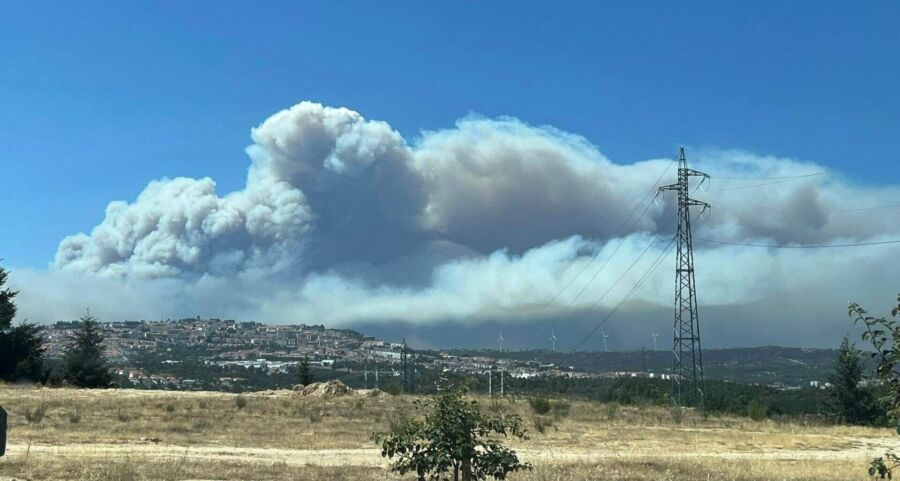“This could end up in court, just like Pedrógão Grande”
The horrendous fire still raging on three fronts in Serra da Estrela – after six full days of combat involving hundreds of firefighters, appliances and reinforced air support – is now being investigated by public prosecutors.
Just as the government has admitted ‘adjustments may be necessary’ to firefighting strategy, media reports stress the focus of investigation will be decision-making over combat during the first two days.
These were the moments when the blaze ‘could have been contained’, critics have insisted.
Says Correio da Manhã this morning, this “could end up in the courts, like what happened with Pedrógão Grande“.
It is not just local mayors who are incensed by the decision-making of the ‘hierarchy’ of Civil Protection, but firefighters themselves.
António Nunes, president of the League of Firefighters (Liga dos Bombeiros), said yesterday: “The system has failed. We want to know what happened”.
Calling for an independent commission to go over exactly what took place to see this fire develop in the way that it has, he told reporters firefighters should be given the power of decision-making in these situations – including when it comes to the use of air support.
This way, “windows of opportunity that appear to reduce fires can be taken advantage of”, he told Lusa – “without wasting time waiting for the decisions of diverse entities that intervene in firefighting combat” (meaning, principally, Civil Protection, but other entities as well).
Firefighters need a ‘national command’, says Nunes – a body responsible for combating fires, whether they are urban, rural, industrial or in deeply forested areas, as is the case of this fire in Serra da Estrela.
Civil Protection can be responsible for coordination, by all means – but decision-making needs to be given to firefighters, he said – and the ‘authorisations process’ (for example, in actioning earthmoving machinery, to clear land ahead of advancing flames) ‘cannot wait for permission to be given by the ICNF’ (forestry institute). It has to be something firefighters can decide, then and there and see carried out.
This morning expert criticism will be addressed at a meeting coordinated by the government.
In António Nunes’ mindset, a better strategy would be to make the ICNF responsible for everything in the form of ‘preparing forests and rural spaces for fires’ (ie ensuring there are pathways for firefighting vehicles to be able to use; the GNR should be responsible for forestry vigilance and firefighters for fire combat.
Meantime, the loss of biodiversity in Serra da Estrela as a result of this fire so far is beyond tragic.
Guardians of the natural park talk of a scale of damages that won’t even become clear for some time: so much has been lost.
“This is an enormous damage to the biodiversity of Serra da Estrela because the fire has affected such a vast area, at different altitudes. There have been areas destroyed at points at 600 metres; others at heights of 1,500 metres. This heterogeneity of affected spaces results in a huge loss, because it affects many different habitats” – flora and fauna – José Conde, a biologist at CISE (the Serra da Estrela Interpretation Centre) tells Lusa.
Indeed, there are some reptiles, and species of insect “that only exist in Serra da Estrela”, «thus their existence will come under further threat than it already is.
Right now, as the meeting to ‘decide on any adjustments to firefighting strategy’ takes place, there are 1,641 firefighters on the ground, supported by 488 appliances and 14 air support. This is the 7th day of firefighting. In living memory, there hasn’t been a wildfire in the natural park that has lasted this long. Blaming this on wind “is not an option” say critics.


























